October 31, 2018
In
Contractors, Workers Compensation
OSHA Presents: The Top 10 Violations of 2018
OSHA revealed the agency’s Top 10 violations for 2018 at the National Safety Council Congress & Expo in Houston, Texas. Patrick Kapust, deputy director of OSHA’s Directorate of Enforcement Programs, presented the agency’s list.
While the list is largely familiar, there are a few surprises. The data covers violations from October 2017 through September 2018. It’s preliminary, and the precise number of violations may change, but the ranking is likely to remain consistent when OSHA releases final numbers.
The top 10 violations of FY 2018 are:
- Duty to provide fall protection: 7,270 violations. OSHA’s top citation for several years. According to OSHA, common violations under this standard include failure to provide fall protection near unprotected sides or edges and on both low-slope and steep roofs. Targeted industries:roofing contractors, framing contractors, masonry contractors, and new single-family housing construction contractors.
- Hazard communication:4,552 violations. Common deficiencies include lack of a written program, inadequate training, and failure to properly develop or maintain safety data sheets (SDSs). Targeted industries: Auto repair facilities, hotels, and motels
- Scaffolds—general requirements: 3,336 violations. Common violations included lack of proper decking, failure to provide personal fall arrest systems and/or guardrails where required, and failure to ensure that supported scaffolds are adequately supported on a solid foundation. Targeted industries: Masonry, siding, and framing contractors
- Respiratory protection: 3,118 violations. Failure to establish a program, failure to perform required fit testing, and failure to provide medical evaluations were among the most frequently cited issues. Targeted industries: Auto body refinishing, painting contractors, and wall covering contractors
- Lockout/tagout:2,944 violations. Many employers failed to establish an energy control procedure altogether, while others were cited for failing to provide adequate employee training, failure to develop machine-specific procedures, and failure to use lockout/tagout devices or equipment.
- Ladders: 2,812 violations. Common deficiencies included failure to have siderails extend 3 feet beyond a landing surface, using ladders for unintended purposes, using the top step of a stepladder, and ladders with broken steps or rails. Targeted industries: roofing, framing, siding, and masonry contractors.
- Powered Industrial Trucks: 2,294 violations. Violations included deficient or damaged forklifts that were not removed from service, operators who had not been trained or certified to operate a forklift, and failure to evaluate forklift drivers every 3 years as required. Targeted industries: warehousing and storage facilities, fabricated and structural metal manufacturing, and wood container and pallet manufacturing.
- Fall protection—training requirements: 1,982 violations. Common issues include failing to provide training to each person required to receive it, failure to certify training in writing, failing to ensure that training is provided by a competent person, and failing to train the proper use of guardrails and personal fall arrest systems.
- Machine guarding: 1,972 violations. Violations included failing to guard points of operation, failing to ensure that guards are securely attached to machinery, and failure to properly anchor fixed machinery. Targeted industries:machine shops, fabricated metal manufacturing, and plastics manufacturing.
- Personal protective and lifesaving equipment—eye and face protection: 1,536 violations. The final violation is a newcomer to OSHA’s top 10 list. Common issues included failing to provide eye and face protection where employees are exposed to hazards from flying objects; failing to provide protection from caustic hazards, gases, and vapors; and allowing employees to wear combinations of prescription and safety eyewear that compromise the protective qualities.
If you’d like to talk more about workplace safety innovations, keeping your workers safer, and how to utilize the data on this list, please email or call me anytime to get the conversation started.

